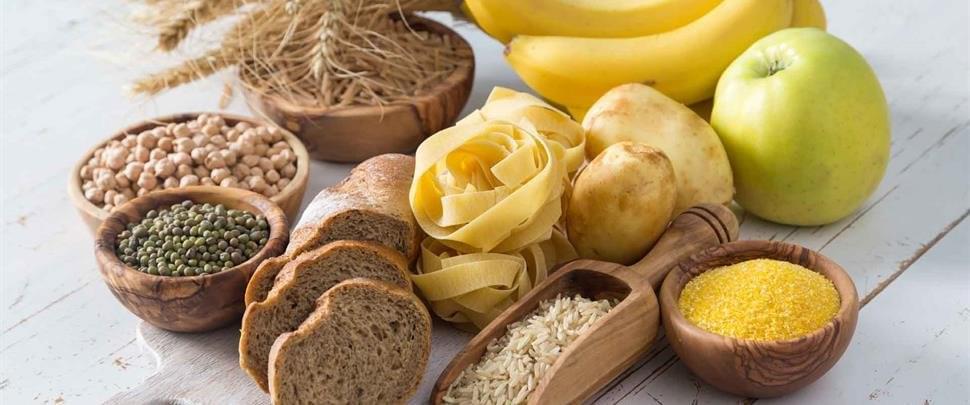How to Improve the Glycemic Effect of Carbohydrates with Other Foods

Carbohydrates are often considered the enemy of weight loss and blood sugar control because they tend to increase blood glucose levels and insulin. Insulin is a hormone that tells your body to store calories, and if you consume excess carbohydrates, they can be stored as body fat.
This is why low-carbohydrate diets have become so popular for weight loss and diabetes management.
However, the glycemic effect of carbohydrates is not solely determined by the number of carbohydrates consumed.
Several factors influence the glycemic index, which measures how high blood glucose levels rise after consuming a certain carbohydrate.
Total Carbohydrate Intake
The total number of carbohydrates consumed is one of the most important factors in determining the glycemic effect of a meal. Carbohydrate counters are well aware of this, and many low-carbohydrate diets restrict carbohydrate intake to as little as 20 grams per day. In contrast, North Americans consume two to three hundred grams of carbohydrates daily.
Net Carbohydrates
The glycemic effect of carbohydrates is also influenced by the net carbohydrates, which are calculated by subtracting fiber from the total carbohydrates.
The body does not absorb fiber, so it doesn’t contribute to blood glucose levels. Thus, consuming foods with high fiber content can help lower the glycemic index of a meal.
Food Order
The order in which foods are consumed can also affect the glycemic index of a meal. Eating carbohydrates last, for example, can significantly reduce the glycemic effect of the meal.
This is because consuming protein and fats before carbohydrates can slow down the absorption of carbohydrates, resulting in a slower rise in blood glucose levels.
Pairing Carbohydrates with Other Foods
Another way to improve the glycemic effect of carbohydrates is to pair them with other foods that can blunt the effect on blood glucose. Studies in Japan have shown that consuming rice with vinegar or pickled vegetables can significantly reduce the glycemic index of the rice.
Adding lemon juice to carbohydrates has also reduced the glycemic index by 40-50%.
The mechanism behind this effect is related to the way our body digests starch.
Salivary alpha-amylase is an enzyme that breaks down starch and starts working as soon as we chew our food. Pancreatic alpha-amylase takes over once the food reaches the stomach.
However, the salivary alpha-amylase remains active in the stomach until the pH drops to 3 or 4, which can take up to two hours. This means that up to 60-80% of the starch in bread may be broken down by the salivary alpha-amylase before the food reaches the pancreas.
Adding acid to the meal, such as vinegar or lemon juice, can inhibit the salivary alpha-amylase, resulting in a slower and more controlled digestion of starch.
Other foods that have been shown to blunt the glycemic effect of carbohydrates include bean products, such as soybeans and natto, and milk. However, the effect of milk on glycemic response may be mixed because it contains whey protein, which can stimulate insulin secretion.
Conclusion
In conclusion, the glycemic effect of carbohydrates is not solely determined by the number of carbohydrates consumed. Factors such as net carbohydrates, food order, and pairing carbohydrates with other foods can significantly affect blood glucose levels.
By incorporating these strategies into your diet, you can enjoy the benefits of carbohydrates without compromising your blood sugar control or weight loss goals.
Q: What is the glycemic index?
- A: The glycemic index (GI) measures how quickly and how much a particular carbohydrate-containing food raises blood glucose levels.
Q: Why is it important to control blood glucose levels?
- A: High blood glucose levels over time can lead to complications such as diabetes, cardiovascular disease, and nerve damage.
Q: How can I lower the glycemic effect of carbohydrates in my diet?
- A: You can lower the glycemic effect of carbohydrates by pairing them with protein, fiber, and healthy fats. This can slow down the digestion and absorption of carbohydrates.
Q: What are some examples of high-GI carbohydrates?
- A: Examples of high-GI carbohydrates include white bread, white rice, potatoes, and sugary drinks.
Q: What are some examples of low-GI carbohydrates?
- A: Examples of low-GI carbohydrates include whole grains, legumes, fruits, and vegetables.
Q: How can I pair carbohydrates with protein to improve glycemic control?
- A: With your carbohydrate-containing meal, you can pair carbohydrates with protein with a small serving of lean protein, such as chicken or fish.
Q: How can I pair carbohydrates with fiber to improve glycemic control?
- A: You can pair carbohydrates with fiber by choosing whole-grain bread instead of white bread or by adding vegetables to your pasta dish.
Q: How can I pair carbohydrates with healthy fats to improve glycemic control?
- A: You can pair carbohydrates with healthy fats by adding avocado to your sandwich or salad or by using olive oil to cook your pasta.
Q: What are some low-GI snack options?
- A: Low-GI snack options include an apple with almond butter, carrots with hummus, or a handful of nuts.
Q: Can other factors affect the glycemic effect of carbohydrates?
- A: Yes, other factors that can affect the glycemic effect of carbohydrates include the cooking method, the degree of ripeness, and the processing of the food. For example, overcooking pasta can increase its GI, while cooking it al dente can lower its GI.